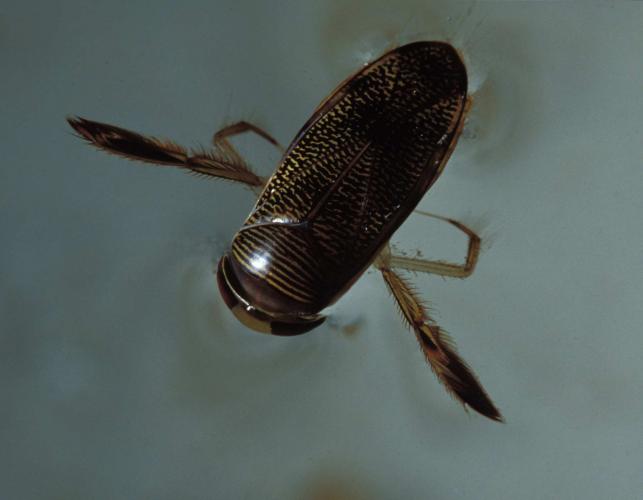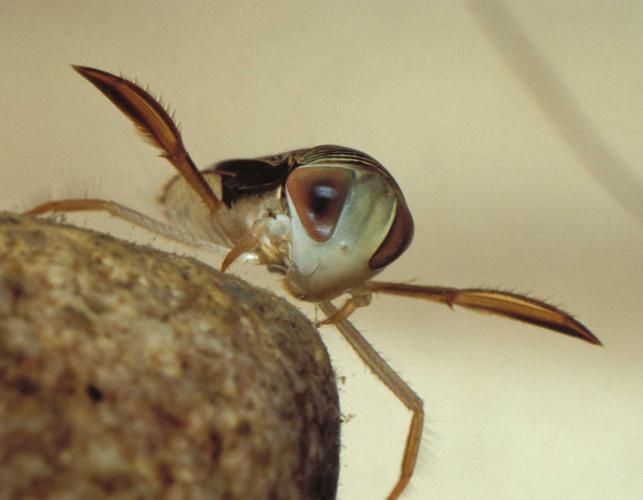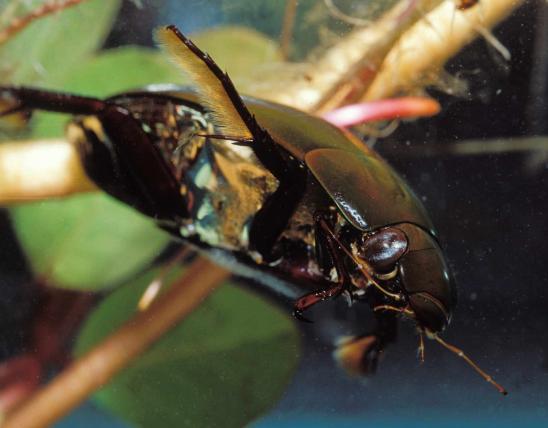
Water boatmen, or corixids (from the family name), are slender, oval, streamlined water bugs that swim with long, oarlike hind legs that have fine hairs. The back is flattened and has several narrow, dark, parallel crosslines. A thin, silvery bubble of air, trapped against the body, functions like a diving bell, enabling the insect to stay for periods underwater. To keep themselves from floating back up to the surface, corixids hook one of the shortened forelegs around a plant or other object. The “foot” portion of the forelegs has only one segment and is shaped like a scoop.
Corixids are commonly confused with backswimmers (family Notonectidae), which are predaceous and can deliver a painful bite. Backswimmers have a keeled back, which is often a light color and lacks the crosslines typical of water boatmen. The foot of the front pair of legs is not scoop-shaped. Also, backswimmers swim on their backs, and water boatmen swim with the dorsal side ("back") upward.
Adult length: usually less than ½ inch.

Statewide.
Habitat and Conservation
The various species and genera of water boatmen are most common in ponds and in quiet areas of lakes and streams, where vegetation gives them something to cling to as well as something to eat. Water boatmen are strong fliers and are attracted at night to artificial lights. They are quite clumsy out of water. People find the occasional stray water boatman in birdbaths and swimming pools, where the insect ends up after a night’s flying excursion.
Food
Almost all “true bugs” (in the order Hemiptera) have tubelike mouthparts for sucking in their nourishment. Water boatmen are one of the few aquatic members of this order that are not predaceous and do not bite people. Instead, they suck juices from algae, plants and detritus. Only a few species eat other small aquatic creatures (such as mosquito larvae).
Life Cycle
Water boatmen adhere their eggs on underwater objects. Generally, the young look like miniature versions of the adults, only lacking the wings, which they acquire during their final molt.
Human Connections
Water boatmen are fascinating creatures to watch, especially in an aquarium. Also, because fish eat water boatmen, fly-fishers sometimes craft lures replicating the insects, then simulate their jerky swimming pattern in order the catch fish — and have a lot of fun in the process!
Ecosystem Connections
Water boatmen and their multitudes of young are preyed upon by many kinds of aquatic animals, ranging from other insects to fish to amphibians and more. This way, with their bodies, they transform algae and detritus into animal tissue.


































